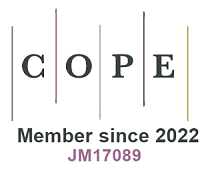Management strategies using biologics in systemic lupus erythematosus
Abstract
Our foray into the development of novel therapies for systemic lupus erythematosus (SLE) began several decades ago. This was only possible because of the dissection of the immune system and the identification of key molecules and pathways that appeared to play roles in SLE pathogenesis. For example, although interferon was discovered in the 1950s, its association with SLE was not recognized until the late 1970s. Building upon the early observations made in autoimmune diseases, interferon inhibitors were first tested in SLE in the early 2000s. Another example is the sequencing of neutrophil libraries and the identification of a gene that encoded a protein that was subsequently named B Lymphocyte Stimulator (BLyS, also known as B Cell Activating Factor [BAFF]). These discoveries eventually led to the development of anifrolumab, an antibody to the Interferon-Alpha Receptor, and belimumab, an antibody to BLyS. Their roles in the treatment of SLE are outlined in the manuscript that follows.
Keywords
INTRODUCTION
The biotechnology revolution has enabled the scientific community to dissect the immune system in health and disease. A byproduct of these scientific advances has been the development of therapies for patients with autoimmune diseases. While drug approvals in rheumatoid arthritis and psoriatic arthritis occurred at breakneck speed, approvals for other rheumatic diseases proved to be far more challenging. However, it was just a matter of time before the lupus community witnessed three drugs, two biologics and one small molecule, approved for a total of two indications, systemic lupus erythematosus (SLE) and lupus nephritis. This manuscript focuses on the two approved biologics.
HISTORY OF THE DEVELOPMENT OF BIOLOGICS IN SYSTEMIC LUPUS ERYTHEMATOSUS
Early development of biologics for systemic lupus erythematosus (SLE) began in the 1990s; however, it was not until 2011 that history was made. Not only was the first biologic approved for SLE by the United States Food and Drug Administration at this time, but it was the first drug ever approved for SLE via the route of a randomized controlled trial. The title holder for this celebrated event was belimumab, a monoclonal antibody that binds and neutralizes B Lymphocyte Stimulator (also known as B Cell Activating Factor). Although the path to approval followed a traditional sequence from phase I through phase III[1-4], several challenges were encountered along the way. The phase II study failed to attain its primary endpoint, but post-hoc analyses yielded insights that provided the groundwork for the creation of the SLE Responder Index, an SLE-specific clinical trial composite endpoint that has remained the primary endpoint for many SLE trials[5]. It was a large leap of faith to incorporate the untested SRI into the phase III belimumab trials, BLISS-52 and BLISS-76. The successes of BLISS-52 and BLISS-76 were unfortunately tempered by the small effect size (9.6) of the BLISS-76 trial. However, the subsequent successes of BLISS-SC, BLISS-Northeast Asia, PLUTO, and BLISS-LN built confidence in belimumab’s efficacy and safety profiles[6-9].
The belimumab program broke the ice, not only delivering an endpoint that allowed discrimination between placebo and experimental drug, but also providing recommendations to mitigate the risk of trial failure. For example, the requirement for serologic activity (i.e., positive ANA or anti-dsDNA antibody) at screening became a routine clinical trial entry criterion. Another composite responder index, the British Isles Lupus Assessment Group-based Composite Lupus Assessment (BICLA), was created during this same era and is conceptually similar to the SRI[10]. Although the epratuzumab program that spawned the metric did not succeed, the BICLA remains a choice for a clinical trial endpoint.
Anifrolumab, the second biologic to be approved by regulators, had its beginnings with a different, though somewhat related, drug. Based on growing evidence that type I interferon (IFN-1) plays a role in SLE pathogenesis, several companies developed monoclonal antibodies to alpha interferon. Sifalimumab was one such antibody, and it progressed in SLE drug development through phase II[11]. Although the highest dose administered in the phase II study yielded a significant clinical effect, the degree of inhibition of the interferon gene signature (IFNGS), a proxy for type I IFN pathway activation, was modest. The question that arose was whether a different approach that could result in greater IFN-1 inhibition would yield better clinical results than observed with sifalimumab. After all, sifalimumab only inhibited alpha IFN, leaving the four remaining IFN-1 subtypes available to signal through the type I IFN receptor, known as the IFN alpha receptor (IFNAR). Anifrolumab binds to IFNAR and thus inhibits all five subtypes of the IFN-1 family. Pharmacodynamic data demonstrated approximately 90% IFNGS inhibition, which was far greater than the 25% IFNGS inhibition observed with sifalimumab. The robust clinical effects observed in the phase II SLE trial with anifrolumab were attributed to the greater degree of IFNGS inhibition[12]. Confidence was quite high when transitioning anifrolumab from phase II to phase III, but lupus clinical trials are fickle. The experience in the anifrolumab phase III program, known as Trial of Anifrolumab in Active Systemic Lupus Erythematosus (TULIP), underscores this statement[13,14]. Of the two pivotal studies, TULIP-1 and TULIP-2, the former failed to achieve its endpoint, largely because of a high placebo response in the arthritis SLEDAI domain[15]. However, the totality of the phase II and III data was sufficiently convincing to regulators, and the drug received FDA approval in 2021.
Many biologics have been evaluated but have failed to achieve successful outcomes, limiting their potential for off-label use. An exception is rituximab, which did not meet its primary endpoints in the registrational trials EXPLORER and LUNAR[16,17]. However, open-label studies and off-label experience have demonstrated the efficacy of rituximab in both SLE and lupus nephritis. In fact, despite not receiving FDA approval, rituximab is referenced in several recent SLE treatment guidelines due to its observed clinical benefits.
TRANSLATING TRIAL OUTCOMES TO REAL-WORLD USE
Once a drug becomes available, clinicians often face challenges in trying to translate the clinical trial information to determine which of their patients might be candidates. This is quite understandable as metrics like SRI, BICLA, or Cutaneous LE Disease Area and Severity Index (CLASI) do not resonate with clinicians. To simplify these outcome measures and equate them with more familiar assessments used in practice, the author and colleagues published three articles that addressed these concerns. The first one provided clinical and laboratory correlates of SRI response using the phase III belimumab dataset[18]. The next two addressed SRI and BICLA outcomes in the phase II and III anifrolumab studies, respectively[19,20]. The analyses in these three studies were performed independently of treatment assignments, as the overall goal was to provide a better understanding of the clinical implications of attaining the desired clinical trial outcome. For example, the achievement of either an SRI or BICLA response was associated with fewer flares and lower use of prednisone, to name just a few of the favorable outcomes.
With the more recent introduction of Lupus Low Disease Activity State (LLDAS) and Definition of Remission in SLE (DORIS)[21,22], several analyses of SLE clinical trial datasets have been conducted to determine the frequency with which these novel outcomes are achieved[23-25]. Since both of these outcome measures have been associated with short- and long-term easily understood benefits, their attainment is quite desirable.
When should a biologic be started?
For a long time, our therapeutic options for SLE were quite restricted. However, this landscape has changed, and we now have more treatment choices. With increased choices, however, comes greater uncertainty. When belimumab received FDA approval in 2011, the author received numerous inquiries from colleagues requesting guidance on when to initiate this new biologic and how to identify the most suitable patients for treatment. This discussion will address both the “when” and the “who”.
When biologics were first introduced for the treatment of rheumatoid arthritis, they were generally administered to methotrexate inadequate responders. However, treatment algorithms for rheumatoid arthritis have changed over time to support earlier use of biologics. A similar shift toward earlier intervention has also occurred in SLE. Initially, both belimumab and anifrolumab were generally prescribed only after failure of conventional immunosuppressive therapies. However, due to their favorable safety profiles and demonstrated efficacy across multiple outcomes (such as reduced disease activity, steroid tapering, flare prevention, and achievement of LLDAS or DORIS), clinicians are increasingly initiating biologic therapy earlier in the treatment course. In fact, the recent EULAR recommendations for the management of systemic lupus erythematosus: 2023 update states that biologics such as belimumab and anifrolumab can be used as second-line therapies following hydroxychloroquine or glucocorticoids even in patients with mild disease activity[26]. In clinical practice, additional factors such as patient acceptance and insurance approval also influence the decision to initiate biologic therapy.
For patients with lupus nephritis (LN), the decision to use a biologic, namely belimumab, is more straightforward. In the BLISS-LN study, the combination of mycophenolate or cyclophosphamide (standard of care: SOC) and belimumab outperformed SOC alone[7]. These findings were the basis for the 2024 American College of Rheumatology Guideline for the Screening, Treatment, and Management of Lupus Nephritis guidance, which recommended triple (glucocorticoids, mycophenolate, and belimumab) as one of the potential therapies for patients with proliferative and/or membranous LN. However, subgroup analysis demonstrated there was no statistical benefit in the attainment of some of the key efficacy end points with the administration of belimumab in patients with pure class V LN. Similarly, in patients with baseline proteinuria > 3 grams, there appeared to be no benefit to the addition of belimumab to SOC in achievement of key end points. Thus, based on these observations, clinicians may forego the addition of belimumab in specific subsets of LN patients and resort to other therapies, such as voclosporin. However, these analyses were subject to limitations inherent to subgroup analysis as discussed below.
Although rituximab is often administered to patients with refractory SLE or LN, its administration in the EXPLORER and LUNAR failed to demonstrate statistical benefit. Obinutuzumab, a type II anti-CD20 monoclonal antibody, is a far more potent B cell-depleting antibody than rituximab. Its administration in a phase II study (NOBILITY) of patients with proliferative LN resulted in statistically significant and clinically meaningful results[27]. Positive topline results of the phase III study (REGENCY) were announced in a press release in September 2024, and the corresponding manuscript was published in early 2025[28]. Thus, obinutuzumab could very well become the second biologic approved for the treatment of LN.
Closely linked to the “when” is the “who.” Since the composite index is generally the primary endpoint of an SLE clinical trial, it is the most significant efficacy measure for regulatory approval. However, clinicians are more interested in identifying baseline patient characteristics that predict an enhanced response. Additionally, they want to know if there are specific domains that respond better than others. Although subgroup analyses of the clinical trial dataset have the potential to answer these questions, such analyses have statistical limitations due to inadequate power or patients having multiple varied characteristics. Nevertheless, analyses have been conducted in phase III trials of belimumab and anifrolumab to explore response rates in various patient subgroups[29-31].
When should benefit be expected?
It is routine for clinicians and patients to inquire about the interval of time before benefit should be realized. With the administration of a biologic, the pharmacodynamic effects may occur rapidly, but the clinical effects typically lag. The answer to this question is confounded by several factors, including the properties of the drug being administered, the complication being targeted, and the metric(s) being assessed. Regarding metrics, for example, in the BLISS-76 trial, it was not until the week 52 timepoint that the SRI response rate was statistically superior in the belimumab arm compared to placebo. However, using different metrics, separation was observed at earlier time points. At week 40, there was a greater percentage reduction in SLEDAI in the belimumab group, and as early as week 8, the group that received belimumab had greater serologic improvement than the placebo group.
The tempo of response may vary according to the manifestation being treated. As previously mentioned, statistical separation between belimumab and placebo occurred at week 52 in the BLISS-76 trial, whereas in the BLISS-LN trial, the first timepoint where a statistical difference between belimumab and placebo was observed in patients with LN was week 24. The response to anifrolumab exemplifies this point as well. Analysis of the phase III TULIP dataset revealed the earliest sustained statistical separation between anifrolumab and placebo to be weeks 8, 12, and 32 for the SLEDAI-2K immunologic, mucocutaneous, and musculoskeletal domains, respectively[30].
Clues that indicate response will come from the patients and their laboratory tests. For those deemed inadequate responders, an additional challenge is determining when to discontinue a biologic. If withdrawn too early, a potentially effective medication may be abandoned before it has had sufficient time to take effect. On the contrary, unnecessarily continuing a biologic may increase safety risks and certainly escalate healthcare costs. While formal guidance in this regard would be ideal, none currently exists.
Further complicating decisions around treatment duration is the ability of biologics to prevent disease flares and slow damage accrual. Traditional placebo-controlled trials, typically of relatively short duration, are not well-suited to evaluate long-term damage progression. This obstacle has been circumvented by comparing long-term clinical trial extension data to data from well-characterized patient cohorts. The first such analysis compared the phase II open-label extension of belimumab with data from the University of Toronto’s SLE cohort[32]. Using propensity score matching, the study concluded that patients receiving belimumab accrued organ damage at a slower rate than those in the Toronto cohort. A similar study was conducted using data from the long-term extension of anifrolumab (TULIP-LTE), again compared with the University of Toronto cohort. Results indicated that anifrolumab reduced the rate of damage accrual relative to standard care[33].
This author now shares his personal approach to biologic administration. For patients who respond well to a regimen including a biologic, the first step is to taper and discontinue glucocorticoids. The next step is to taper and eventually stop background immunosuppressive agents. Barring any safety issues directly linked to the biologic, the author typically continues the biologic indefinitely. Both the ACR and EULAR have provided guidance on discontinuing immunosuppressive therapy, though neither specifically addresses biologics. The 2025 ACR Guideline for the Treatment of SLE recommends tapering immunosuppressive therapy after 3-5 years of sustained clinical remission or low disease activity, with the goal of discontinuation (strength: conditional; level of evidence: low). Similarly, the 2023 EULAR recommendations advise that patients with lupus nephritis should undergo at least 3-5 years of therapy and be in remission for at least 2 years before considering withdrawal. However, neither guideline provides specific recommendations for discontinuing biologic treatments.
For patients who appear to be inadequate responders, the author delays discontinuation of the biologic until a sufficient treatment duration has elapsed. For example, in patients with extra-renal manifestations receiving belimumab, a minimum of 12 months of therapy is preferred. For anifrolumab, the preferred duration is approximately 6-9 months. In LN, there are guidelines that help assess response based on proteinuria trends. However, proteinuria alone is not sufficient to determine therapeutic response - kidney biopsy remains essential. In cases where an LN patient is deemed an inadequate responder despite receiving belimumab and mycophenolate, therapeutic options become limited but may include switching to an alternative regimen incorporating cyclophosphamide, voclosporin, or a type I or II anti-CD20 antibody.
With data from clinical trials in hand, clinicians must set reasonable expectations for patients from the outset. Rheumatologists are astute observers, and often, the clinical impression of a drug’s effectiveness is shaped as much by experience as by evidence.
CONCLUSIONS
Significant progress has been made in the development of therapies for SLE, albeit at a pace slower than desired. More biologics will likely be approved in the near future. It would be ideal to have the knowledge that could answer the many important questions raised in this manuscript: Which drug or combination is best for a given patient? For which manifestations? Should patients with poor prognostic indicators receive more aggressive therapy? When should clinical benefit be expected? How long should biologic treatment be continued? We hope that ongoing research will provide these answers and lead to improved outcomes for patients with SLE.
DECLARATION
Authors’ contributions
The author contributed solely to the article.
Availability of data and materials
Not applicable.
Financial support and sponsorship
None.
Conflicts of interest
Dr. Furie R has served as an investigator, consultant, and speaker for GSK, AstraZeneca, and Genentech/Roche.
Ethical approval and consent to participate
Not applicable.
Consent for publication
Not applicable.
Copyright
© The Author(s) 2025.
REFERENCES
1. Furie R, Stohl W, Ginzler EM, et al. Biologic activity and safety of belimumab, a neutralizing anti-B-lymphocyte stimulator (BLyS) monoclonal antibody: a phase I trial in patients with systemic lupus erythematosus. Arthritis Res Ther. 2008;10:R109.
2. Wallace DJ, Stohl W, Furie RA, et al. A phase II, randomized, double-blind, placebo-controlled, dose-ranging study of belimumab in patients with active systemic lupus erythematosus. Arthritis Rheum. 2009;61:1168-78.
3. Furie R, Petri M, Zamani O, et al. A phase III, randomized, placebo-controlled study of belimumab, a monoclonal antibody that inhibits B lymphocyte stimulator, in patients with systemic lupus erythematosus. Arthritis Rheum. 2011;63:3918-30.
4. Navarra SV, Guzmán RM, Gallacher AE, et al. Efficacy and safety of belimumab in patients with active systemic lupus erythematosus: a randomised, placebo-controlled, phase 3 trial. Lancet. 2011;377:721-31.
5. Furie RA, Petri MA, Wallace DJ, et al. Novel evidence-based systemic lupus erythematosus responder index. Arthritis Rheum. 2009;61:1143-51.
6. Brunner HI, Abud-Mendoza C, Mori M, et al. Efficacy and safety of belimumab in paediatric and adult patients with systemic lupus erythematosus: an across-study comparison. RMD Open. 2021;7:e001747.
7. Furie R, Rovin BH, Houssiau F, et al. Two-year, randomized, controlled trial of belimumab in lupus nephritis. N Engl J Med. 2020;383:1117-28.
8. Stohl W, Schwarting A, Okada M, et al. Efficacy and safety of subcutaneous belimumab in systemic lupus erythematosus: a fifty-two-week randomized, double-blind, placebo-controlled study. Arthritis Rheumatol. 2017;69:1016-27.
9. Zhang F, Bae SC, Bass D, et al. A pivotal phase III, randomised, placebo-controlled study of belimumab in patients with systemic lupus erythematosus located in China, Japan and South Korea. Ann Rheum Dis. 2018;77:355-63.
10. Wallace DJ, Kalunian K, Petri MA, et al. Efficacy and safety of epratuzumab in patients with moderate/severe active systemic lupus erythematosus: results from EMBLEM, a phase IIb, randomised, double-blind, placebo-controlled, multicentre study. Ann Rheum Dis. 2014;73:183-90.
11. Khamashta M, Merrill JT, Werth VP, et al. Sifalimumab, an anti-interferon-α monoclonal antibody, in moderate to severe systemic lupus erythematosus: a randomised, double-blind, placebo-controlled study. Ann Rheum Dis. 2016;75:1909-16.
12. Furie R, Khamashta M, Merrill JT, et al. Anifrolumab, an anti-interferon-α receptor monoclonal antibody, in moderate-to-severe systemic lupus erythematosus. Arthritis Rheumatol. 2017;69:376-86.
13. Furie RA, Morand EF, Bruce IN, et al. Type I interferon inhibitor anifrolumab in active systemic lupus erythematosus (TULIP-1): a randomised, controlled, phase 3 trial. Lancet Rheumatol. 2019;1:e208-19.
14. Morand EF, Furie R, Tanaka Y, et al. Trial of anifrolumab in active systemic lupus erythematosus. N Engl J Med. 2020;382:211-21.
15. Bruce IN, Furie RA, Morand EF, et al. Concordance and discordance in SLE clinical trial outcome measures: analysis of three anifrolumab phase 2/3 trials. Ann Rheum Dis. 2022;81:962-9.
16. Merrill JT, Neuwelt CM, Wallace DJ, et al. Efficacy and safety of rituximab in moderately-to-severely active systemic lupus erythematosus: the randomized, double-blind, phase II/III systemic lupus erythematosus evaluation of rituximab trial. Arthritis Rheum. 2010;62:222-33.
17. Rovin BH, Furie R, Latinis K, et al. Efficacy and safety of rituximab in patients with active proliferative lupus nephritis: the Lupus Nephritis Assessment with Rituximab study. Arthritis Rheum. 2012;64:1215-26.
18. Furie R, Petri MA, Strand V, Gladman DD, Zhong ZJ, Freimuth WW; BLISS-52 and BLISS-76 Study Groups. Clinical, laboratory and health-related quality of life correlates of Systemic Lupus Erythematosus Responder Index response: a post hoc analysis of the phase 3 belimumab trials. Lupus Sci Med. 2014;1:e000031.
19. Furie R, Morand EF, Bruce IN, et al. What does it mean to be a british isles lupus assessment group-based composite lupus assessment responder? Post hoc analysis of two phase III trials. Arthritis Rheumatol. 2021;73:2059-68.
20. Furie R, Wang L, Illei G, Drappa J. Systemic lupus erythematosus (SLE) responder index response is associated with global benefit for patients with SLE. Lupus. 2018;27:955-62.
21. van Vollenhoven RF, Bertsias G, Doria A, et al. 2021 DORIS definition of remission in SLE: final recommendations from an international task force. Lupus Sci Med. 2021;8:e000538.
22. Franklyn K, Lau CS, Navarra SV, et al. Definition and initial validation of a Lupus Low Disease Activity State (LLDAS). Ann Rheum Dis. 2016;75:1615-21.
23. Morand EF, Abreu G, Furie RA, Golder V, Tummala R. Lupus low disease activity state attainment in the phase 3 TULIP trials of anifrolumab in active systemic lupus erythematosus. Ann Rheum Dis. 2023;82:639-45.
24. Oon S, Huq M, Golder V, Ong PX, Morand EF, Nikpour M. Lupus low disease activity state (LLDAS) discriminates responders in the BLISS-52 and BLISS-76 phase III trials of belimumab in systemic lupus erythematosus. Ann Rheum Dis. 2019;78:629-33.
25. Parodis I, Lindblom J, Levy RA, et al. Attainment of remission and low disease activity after treatment with belimumab in patients with systemic lupus erythematosus: a post-hoc analysis of pooled data from five randomised clinical trials. Lancet Rheumatol. 2024;6:e751-61.
26. Fanouriakis A, Kostopoulou M, Andersen J, et al. EULAR recommendations for the management of systemic lupus erythematosus: 2023 update. Ann Rheum Dis. 2024;83:15-29.
27. Furie RA, Aroca G, Cascino MD, et al. B-cell depletion with obinutuzumab for the treatment of proliferative lupus nephritis: a randomised, double-blind, placebo-controlled trial. Ann Rheum Dis. 2022;81:100-7.
28. Furie RA, Rovin BH, Garg JP, et al. Efficacy and safety of obinutuzumab in active lupus nephritis. N Engl J Med. 2025;392:1471-83.
29. Manzi S, Sánchez-Guerrero J, Merrill JT, et al. Effects of belimumab, a B lymphocyte stimulator-specific inhibitor, on disease activity across multiple organ domains in patients with systemic lupus erythematosus: combined results from two phase III trials. Ann Rheum Dis. 2012;71:1833-8.
30. Morand EF, Furie RA, Bruce IN, et al. Efficacy of anifrolumab across organ domains in patients with moderate-to-severe systemic lupus erythematosus: a post-hoc analysis of pooled data from the TULIP-1 and TULIP-2 trials. Lancet Rheumatol. 2022;4:e282-92.
31. Vital EM, Merrill JT, Morand EF, et al. Anifrolumab efficacy and safety by type I interferon gene signature and clinical subgroups in patients with SLE: post hoc analysis of pooled data from two phase III trials. Ann Rheum Dis. 2022;81:951-61.
32. Urowitz MB, Ohsfeldt RL, Wielage RC, et al. Comparative analysis of long-term organ damage in patients with systemic lupus erythematosus using belimumab versus standard therapy: a post hoc longitudinal study. Lupus Sci Med. 2020;7:e000412.
33. Touma Z, Bruce I, Furie RA, et al. Anifrolumab long-term treatment is more effective against organ damage than standard of care alone: results from an external control arm study on organ damage in phase 3 clinical trials and the university of Toronto Lupus clinic cohort. Arthritis Rheumatol 2024. Available from: https://acrabstracts.org/abstract/anifrolumab-long-term-treatment-is-more-effective-against-organ-damage-than-standard-of-care-alone-results-from-an-external-control-arm-study-on-organ-damage-in-phase-3-clinical-trials-and-the-univer/ [Last accessed on 22 Jul 2025].
Cite This Article
How to Cite
Download Citation
Export Citation File:
Type of Import
Tips on Downloading Citation
Citation Manager File Format
Type of Import
Direct Import: When the Direct Import option is selected (the default state), a dialogue box will give you the option to Save or Open the downloaded citation data. Choosing Open will either launch your citation manager or give you a choice of applications with which to use the metadata. The Save option saves the file locally for later use.
Indirect Import: When the Indirect Import option is selected, the metadata is displayed and may be copied and pasted as needed.
About This Article
Special Issue
Copyright
Data & Comments
Data















Comments
Comments must be written in English. Spam, offensive content, impersonation, and private information will not be permitted. If any comment is reported and identified as inappropriate content by OAE staff, the comment will be removed without notice. If you have any queries or need any help, please contact us at [email protected].